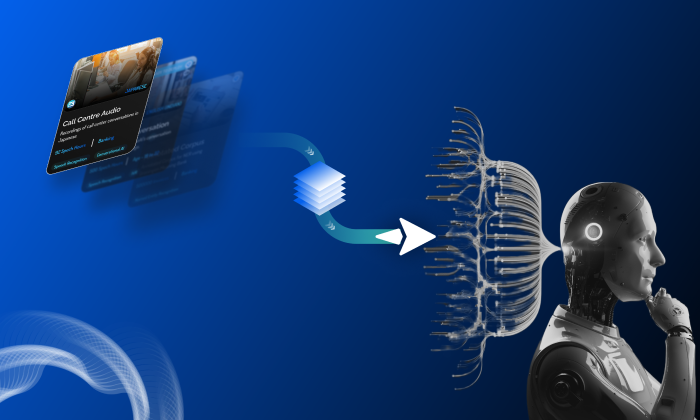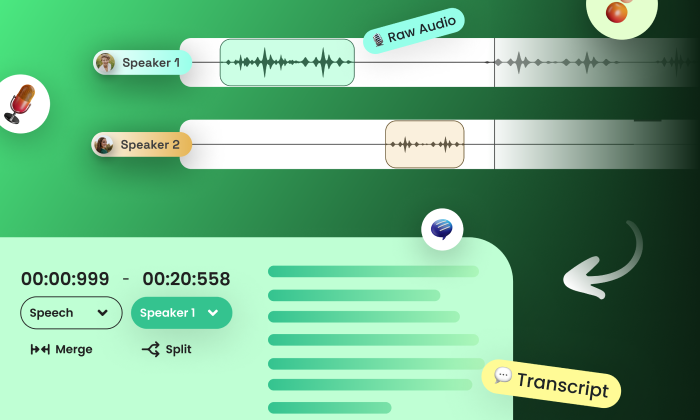What are some common benchmarks for voice cloning model performance?
Voice Cloning
AI Models
Speech AI
Understanding and measuring voice cloning model performance is crucial for advancing AI voice synthesis technologies. By focusing on specific benchmarks, AI engineers, product managers, and researchers can develop more effective and user-friendly voice cloning systems. At FutureBeeAI, we specialize in providing high-quality, diverse datasets that serve as the backbone for training these sophisticated models.
Essential Benchmarks for Evaluating Voice Cloning Models
Audio Quality Metrics in AI
Audio quality is a key determinant of a model's success in replicating human voices accurately. Some essential metrics include:
- Signal-to-Noise Ratio (SNR): This metric gauges audio clarity by comparing the desired signal against background noise. Higher SNR values indicate clearer audio, which is critical for applications like virtual assistants.
- Mean Opinion Score (MOS): Based on human listeners' ratings, this score assesses perceived audio quality. A score of 4 or higher is typically deemed excellent, ensuring the synthesized voice is pleasant and natural.
- Sample Rate and Bit Depth: Commonly set at 48 kHz and 24-bit, these parameters ensure high-fidelity audio, impacting the richness and clarity of the voice.
Naturalness and Expressiveness in Voice Synthesis
Models must produce voices that sound natural and express emotions effectively. The key metrics include:
- Prosody Evaluation: This assesses how well the model replicates the rhythm, stress, and intonation of human speech, which is crucial for applications like storytelling.
- Emotion Recognition Accuracy: It's important for the model to convey emotions accurately, enhancing engagement in interactive environments such as gaming.
Speaker Diversity and Adaptation
To cater to a wide audience, models should adapt to various speakers and dialects. Some key measures are:
- Speaker Similarity Scores: These scores measure how closely a cloned voice matches the original speaker. Techniques like cosine similarity help quantify this aspect.
- Diverse Speaker Coverage: Ensuring performance across genders, accents, and age groups is vital. FutureBeeAI supports this by providing datasets featuring a broad range of speakers.
Latency and Efficiency in Voice Cloning Applications
Real-time voice synthesis demands models that generate audio swiftly and efficiently. Important metrics include:
- Inference Time: This measures the time taken to produce audio from text input. Lower latency is essential for seamless interactions in real-time applications.
- Computational Efficiency: A model's resource usage, including CPU and memory, impacts deployment feasibility on various platforms.
Why Benchmarks Matter in Voice Cloning Evaluation
Applying these benchmarks helps teams effectively evaluate and refine voice cloning models. By focusing on audio quality, naturalness, speaker diversity, and efficiency, developers can create versatile voice synthesis systems that appeal to diverse user needs.
Frequent Challenges in Assessing Voice Cloning Performance
Despite the availability of benchmarks, several challenges can arise:
- Balancing Technical and User Feedback: While technical metrics like MOS and SNR are crucial, incorporating user feedback ensures a comprehensive evaluation.
- Ensuring Dataset Diversity: Training on diverse datasets is essential. FutureBeeAI excels in this area by offering speech datasets that include a wide range of voices, ensuring models can generalize well.
- Testing in Real-World Conditions: Many evaluations occur in controlled settings. Testing models in varied environments can reveal insights into their robustness.
How FutureBeeAI Enhances Voice Cloning Performance
FutureBeeAI plays a pivotal role in improving voice cloning systems by providing custom, diverse datasets tailored to specific needs. Our datasets cover a wide range of languages, dialects, and accents, recorded in professional studio environments to ensure the highest quality. By partnering with us, AI teams can access the necessary data to develop advanced voice cloning technologies efficiently.
Conclusion
For AI teams aiming to enhance their voice cloning capabilities, FutureBeeAI offers datasets that empower innovation and precision in voice synthesis. Our expertise ensures that your models are built on a foundation of high-quality, diverse data, ready to meet the demands of modern AI applications.
Smart FAQs
Q. Why is speaker diversity important in training voice cloning models?
A. Speaker diversity ensures that models can accurately replicate voices across different genders, accents, and emotional tones, making them more applicable and effective in various applications.
Q. How does latency affect voice cloning applications?
A. High latency can disrupt the interaction flow in real-time applications like virtual assistants, reducing user engagement. Lowering latency is crucial for a smooth user experience.
What Else Do People Ask?
Related AI Articles
Browse Matching Datasets
Acquiring high-quality AI datasets has never been easier!!!
Get in touch with our AI data expert now!








